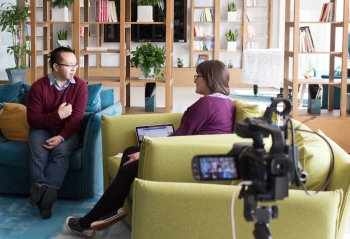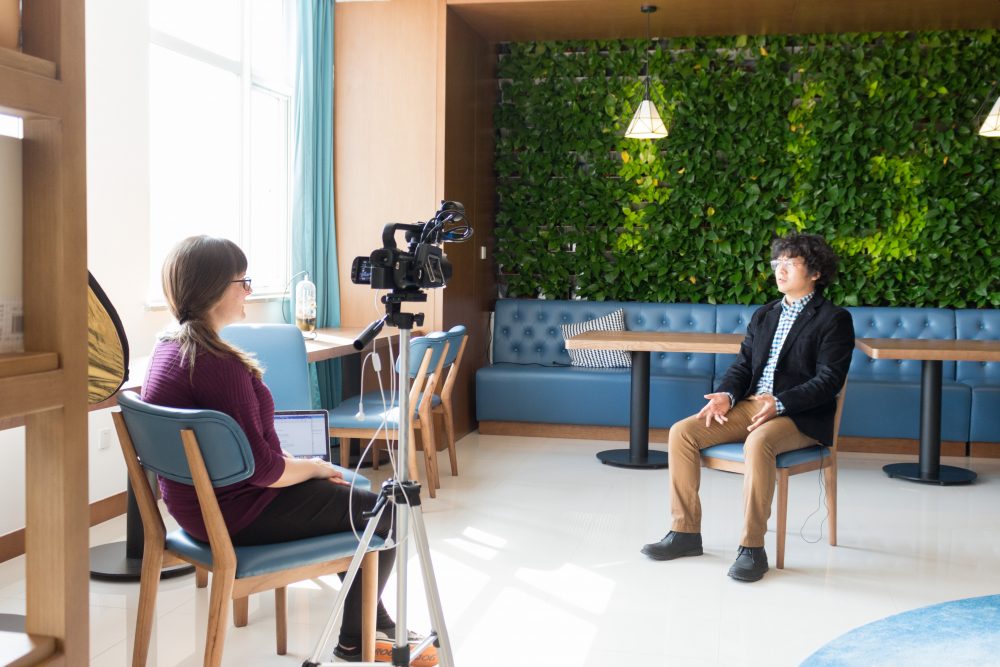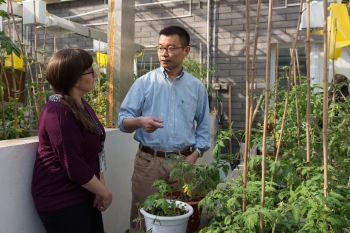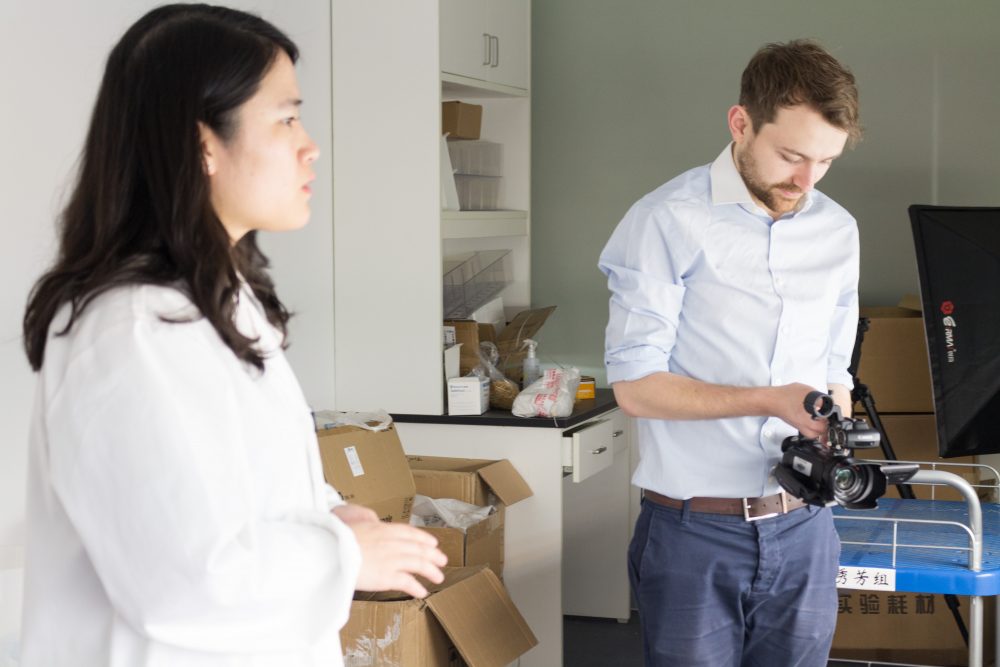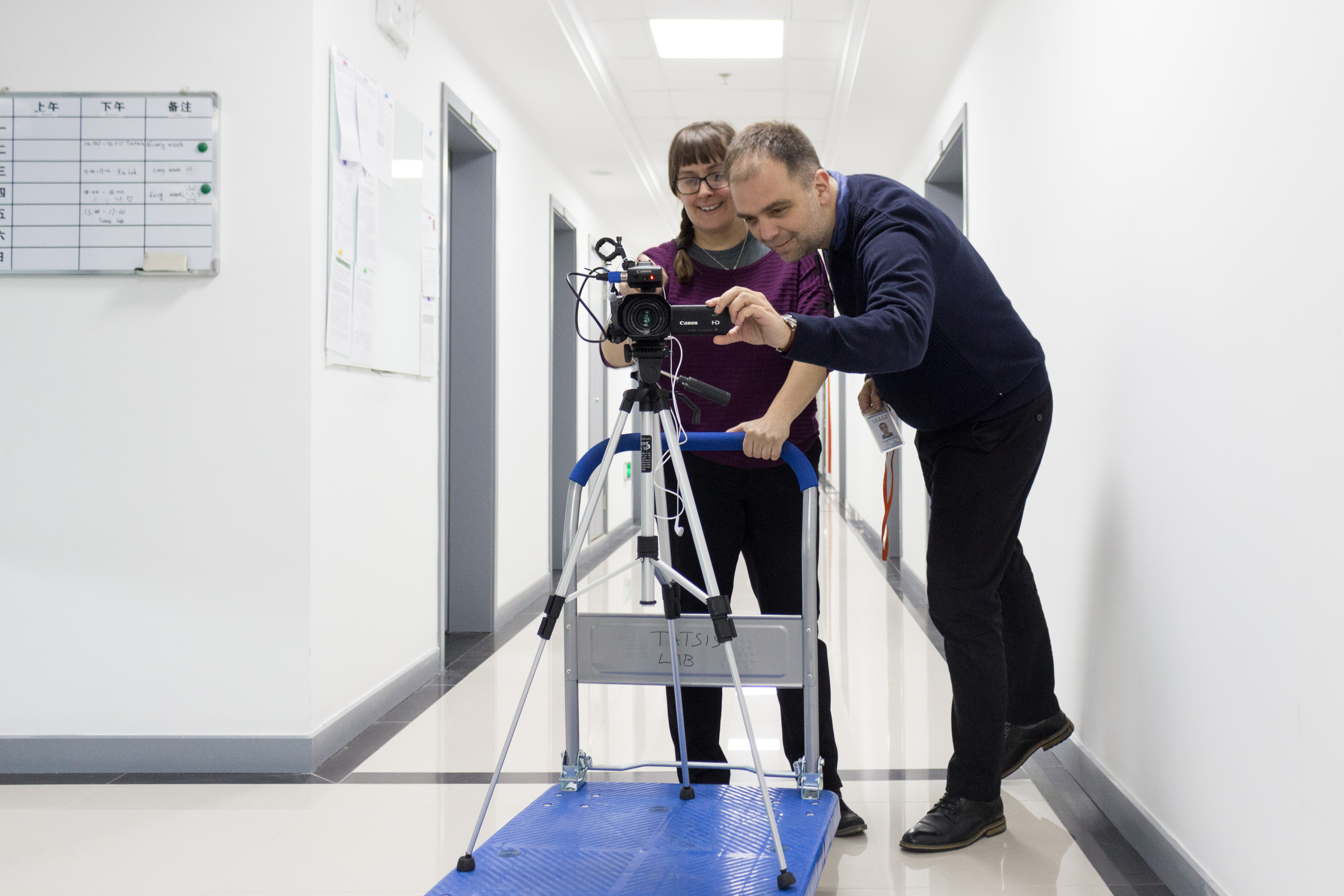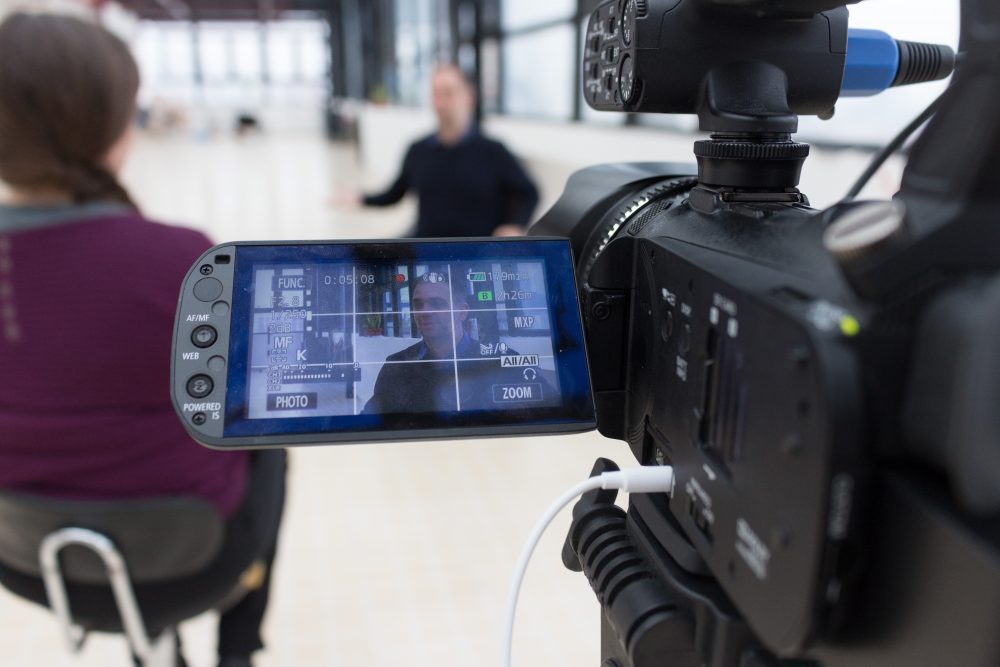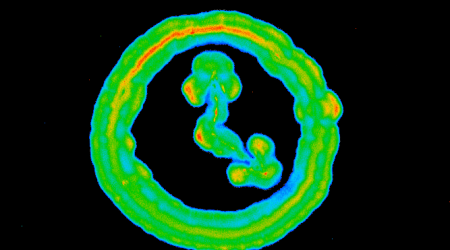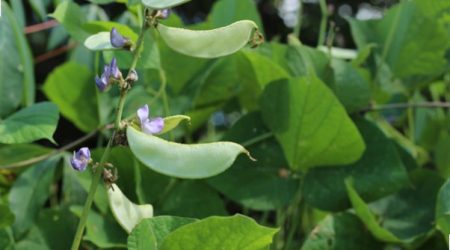CEPAMS symposium 2018
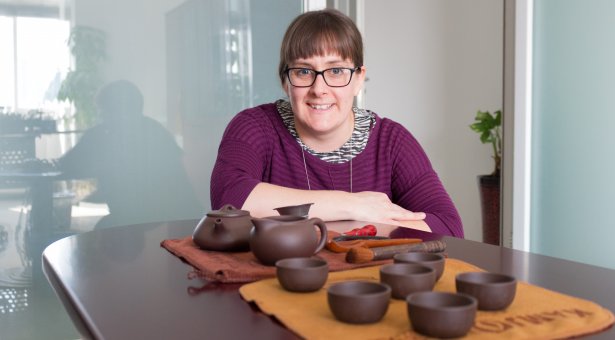
An early start from Norwich Airport for a flight to Amsterdam and the onward journey to Beijing begins with a wait as the short hop to the Netherlands is slightly delayed by mist.
Some of the group heading to China are people that I don’t know that well, and I am excited to get to know more about my colleagues, and to meet the scientists who are based in Shanghai and Beijing on this trip.
The mist lifts from the runway, our aircraft arrives to collect us and we’re our way to China.
We’re all headed to Beijing to the annual Symposium of the Centre of Excellence for Plant and Microbial Science (CEPAMS), a joint research initiative that is a collaboration between the John Innes Centre and the Chinese Academy of Sciences.
Set up in 2014, CEPAMS brings together three world-leading institutes in the UK and China to tackle the global challenges of food security and sustainable health care.
The Centre nurtures excellent science and focuses on the improvement of food crops and the production of high-value, beneficial products from plants and microbes.
What’s different to other collaborations of this ilk, is that this collaboration isn’t virtual, as many are.
Virtual centres are a common way to bring researchers together to form collaborations over long distances, or to pool intellectual resources. But in this collaboration, there are real laboratories, jointly appointed group leaders, lab managers, post-docs and students, plus there’s collaborative research projects that have already published scientific papers.
The dedicated state-of-the-art laboratories in Beijing and Shanghai are staffed by faculty members with joint appointments between the John Innes Centre and the Chinese Academy of Sciences. So far, seven project leaders have been recruited and by the end of 2019 we hope to have recruited 10.
My visit to China gave me the opportunity to visit CEPAMS labs, attend to the annual symposium and interview the joint JIC- CAS project leaders. It’s a fact-finding mission to discover more about this unique cross-institute collaboration.
On our return to the UK we’ll be using this collated information to promote the work of the scientists, and to help us to secure funding to enable this collaboration to continue. To help me do this, Matt Heaton from our International team is also travelling to China.
Many hours after leaving Norwich we arrive in Beijing, bleary eyed and not well rested.
It’s 7am and the sun is low, bright red through a hazy mist of pollution. We are collected from the airport and driven to our hotel in the north of the city. After a day of sightseeing and an early night, the next day I head over the Institute of Genetics and Developmental Biology in Beijing (IGDB) and to the CEPAMS labs to discuss the work that we need to do over the next week.
Our Head of Policy and International Chris Darby shows me around, and I note that the lighting looks pretty good for filming later in the week.
It also strikes me that the labs in China look quite a lot like labs back in Norwich, except here there’s plants growing all over the labs. House plants, not science plants. When I ask why, I’m told that they are known to clean the air, and they give the place a pleasant atmosphere. In some places they are growing all the way across the ceiling and to the next bench like vines.
That afternoon we head out of town to the Swan Lakeview Hotel, the venue for the CEPAMS symposium, an annual event brings together the group leaders and collaborators from the CEPAMS projects and enables discussion of their work, plus the opportunity to meet people from the other side of the world.
Symposiums are one way that we work to nurture a network of world-leading plant and microbial scientists. The cross-cultural nature of this collaboration is a central theme, this event hopes to improve understanding of how our cultural similarities and differences affect how we work together. Without this there would be no meaningful collaboration.
The next two days are a blur of meeting people, taking photographs, listening to scientific talks, learning about the many CEPAMS collaborations, local musical treats and having interesting culinary experiences in the ‘all-day’ dining restaurant. We work during the breaks in the sessions to coax people to have their picture taken, and we line up interviews with the key members of CEPAMS.
On day 2 of the symposium, and it’s time to run the communications workshop, and after the initial shock that we wanted the scientists to talk to each other, rather than just listen, I think the audience found it useful.
We got them making notes about their experiences in and of CEPAMS, and feeding back how we can strengthen the collaboration into the future. This information will be used to help up re-vamp the CEPAMS website, to run new initiatives and to make the case for future funding. It also helped us to engage with the scientists on why they should communicate their science widely.
After the symposium everyone heads back into Beijing, and many start their journeys home. Others stay in China for a few days to have further discussions with collaborators, or to discuss publications or future collaborative projects.
I anticipate a hectic few days of work ahead, but am confident that we can get some great interviews from the project leaders in Beijing and Shanghai to take back to the UK for editing.
I leave the symposium with the feeling that despite the many cultural differences between the UK and China, this joint initiative really works. The shared vision of excellence (it is in the name after all) and the collaborative rather than competitive nature of the projects seems to enable working relationships that challenge everyone to step up, create positive interactions and to do ground-breaking science.
With the symposium wrapped up, we take the opportunity to head to Shanghai, opting for the bullet train over flying. We pack up and head to the station (amidst a snow storm) to catch the punctual train. 5 comfortable and smooth hours later, we’re in Shanghai. It’s a fantastic way to travel and we arrive well rested and ready to carry on with our work.
Multiple times during this visit, I hear that initially the idea of CEPAMS was to create a “John Innes Centre in China”.
In many ways I think this has been achieved. It certainly has a similar feel, there’s a collegiality and friendliness in the atmosphere in both Beijing and Shanghai that is reminiscent of Norwich. Plus there’s the familiar undertone that everyone is working on something that they are passionate about, it sort of bubbles under the surface.
But to call it a John Innes Centre in China would be misleading, I think there are key differences and we aim to celebrate these.
I hope that over the next few years these differences and the things that we learn through CEPAMS can begin to influence the way that we work here in the UK, pushing everyone to be more excellent and setting the bar high for other UK-China collaborations.
CEPAMS is funded by the Chinese Academy of Science (CAS), the UK Biotechnology and Biological Sciences Research Council (BBSRC) and the Newton Fund.

